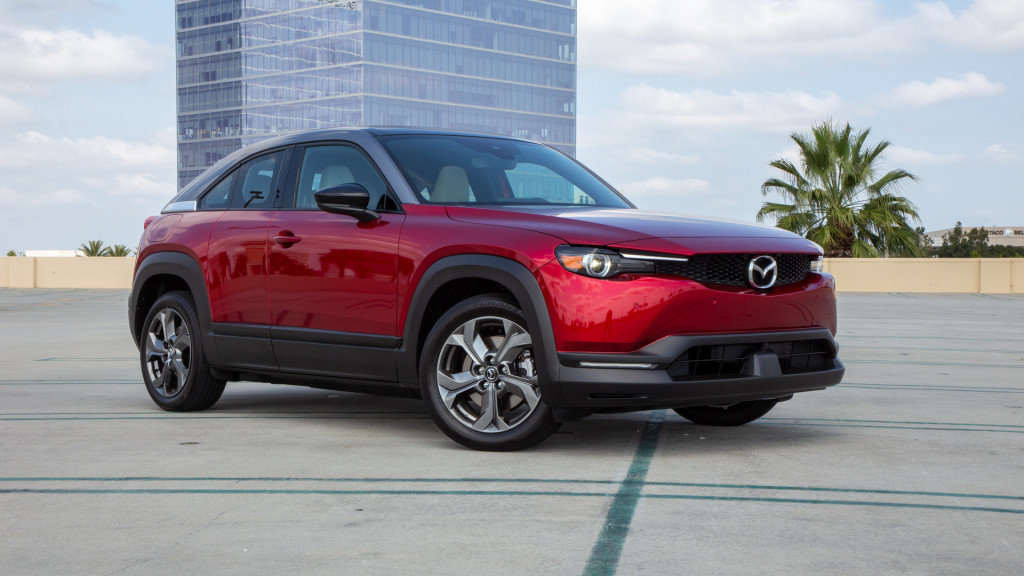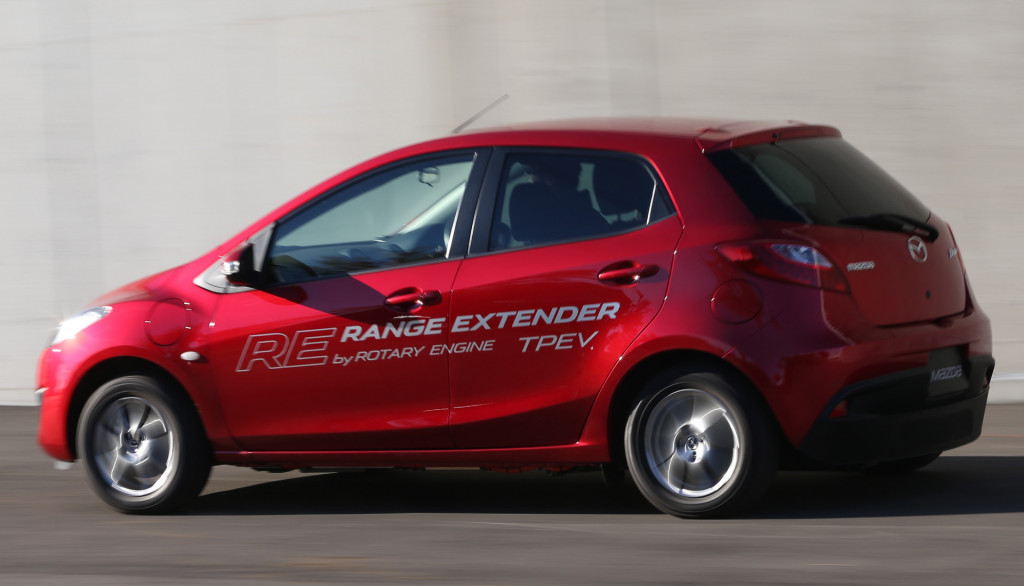Mazda is bringing back the rotary engine, but not as we know it.
The automaker on Monday confirmed plans for a rotary range extender for electric versions of the MX-30. It will be called the MX-30 R-EV. The compact crossover, which debuted in 2019, is also offered in some markets with a mild-hybrid powertrain that relies on a 2.0-liter inline-4.
The rotary-equipped MX-30 will debut on Jan. 13 at the 2023 Brussels auto show. Sales in Europe are scheduled to follow in the spring, though availability in the U.S. hasn’t been announced. According to a report from our sister site, Green Car Reports, it appears the R-EV won’t come to the U.S., at least initially, as the company concentrates on other vehicles.

2022 Mazda MX-30
The MX-30 has been on sale in the U.S. since the 2022 model year, though only in California.
Mazda said the rotary engine in the range-extended MX-30 is a new design. The engine will serve as a generator, rather than a direct source of power for motion.
The current MX-30 has a 35.5-kwh lithium-ion battery, which the EPA rates at just 100 miles of range. It isn’t clear how much range the vehicle will have with the rotary range extender.

Mazda 2 RE Range Extender concept
Mazda has already shown an electric car with a rotary range extender: the Mazda 2 RE Range Extender concept unveiled in 2013. Its rotary was a single-rotor, 0.3-liter unit that with a full tank of gas could provide an additional 111 miles of range.
Mazda’s struggles to reduce emissions of its rotary engine means a rotary-powered sports car is unlikely to return to market, unless Mazda can somehow develop an electrified version that meets ever-tightening emissions regulations, something the automaker appears to be attempting, judging by recent patents.
Every vehicle in Mazda’s lineup will have some form of electrification by 2030. It’s part of the automaker’s overarching goal to achieve a 90% reduction in emissions versus its 2010 levels, by the year 2050.
Update: The story has been updated to include the name of the range-extended MX-30 and information about how likely it is to come to the U.S.
